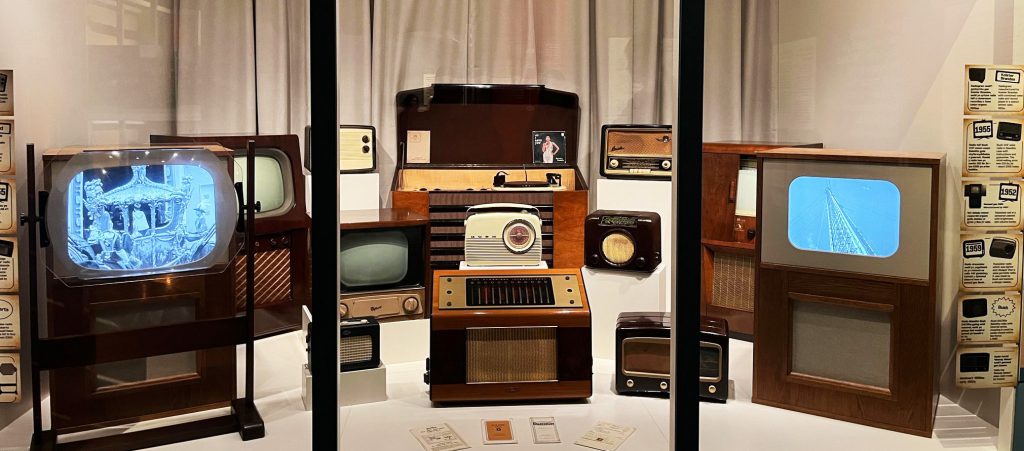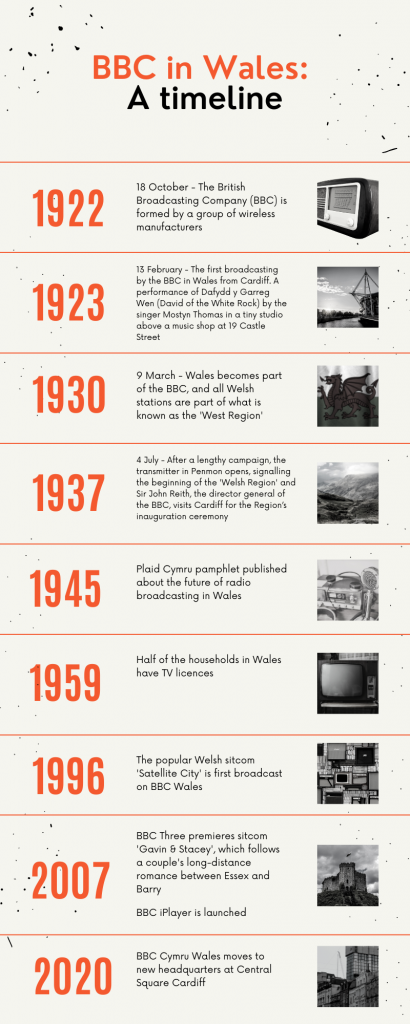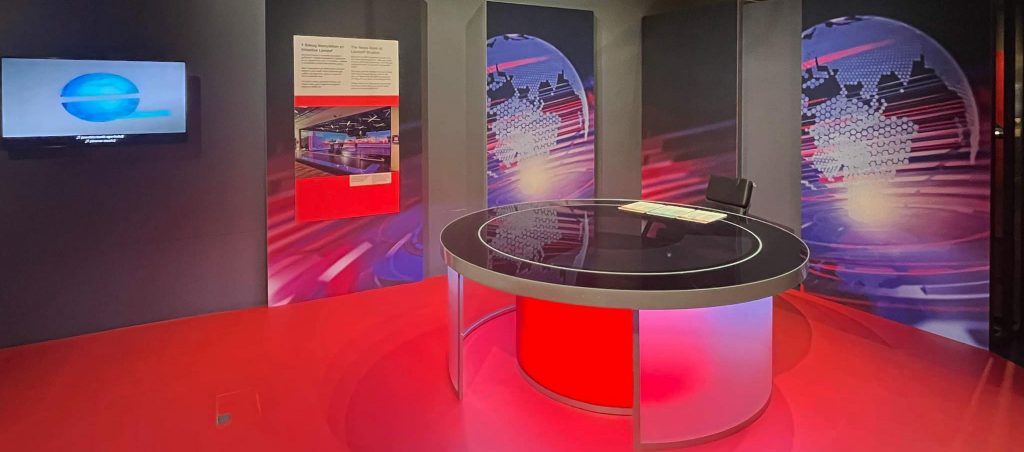BBC 100 in Wales explores the history between the BBC and Welsh audiences, while looking into the future of broadcasting for younger generations

Young people in Wales and Welsh speakers want the BBC to reflect their values, as shown by National Museum Cardiff’s new exhibition.
Running from 10 December to 16 April, BBC 100 in Wales chronicles the history of the BBC with Welsh audiences to mark the broadcaster’s centenary in Wales.

From the BBC’s first broadcast from Cardiff in 1923 to the 21st-century TV shows using Welsh landscapes as their sets, such as His Dark Materials and Sherlock, the exhibition explores how Wales has impacted the BBC and vice versa.
While the BBC has been at the forefront of broadcasting entertainment and information to Wales, young curators want the broadcaster to make improvements regarding impartiality and the representation of cultural groups and media bias.
Breaking tradition
One part of the exhibition is dedicated to critiquing the BBC’s impartiality and exploring how it can adapt to the ever-changing media landscape.
The segment has been co-developed by Amgueddfa Cymru producers, a network of young people aged 16-25 from across Wales who collaborate with the museum to develop events.
Robert Oros, an Amgueddfa Cymru producer, said the BBC needs to change the way certain issues, such as social issues and climate change, are covered to stay relevant. “The BBC’s due impartiality comes into question when considering the hours of dedicated broadcasted coverage of previous events,” he says.
The difference in the amount of coverage the BBC gives to certain events raises questions on political and socio-economic bias, he maintains.
We found in the development of the exhibition that there was more to the BBC than nostalgia
For example, the exhibition highlights how Prince Philip’s death was given a total of 20 hours and 10 minutes of airtime, while two hours and 53 minutes were spent covering the UN climate change conference in Glasgow, COP26.
Figures like these have attracted attention from the public, as the BBC are expected to exercise due impartiality on current events.
“The BBC is mainly ruled in very traditional ways,” Oros explains. “I think what they are emphasising is not correlating with what the public wants.”
Kate Woodward, the museum’s youth engagement facilitator, says critically analysing the elements of Wales’s media to ensure audience engagement is “very important.”
“We found in the development of the exhibition that there was more to the BBC than nostalgia,” she says.
The producers hope to encourage the next generation to engage with the exhibition by including interactive elements, such as a replica news studio desk.

At this desk, visitors to the exhibition can try reporting on lesser-known news stories from Welsh history, which have been collated by the Amgueddfa Cymru producers.
“There are things that are really important that need to be talked about,” says Woodward. “We need to open that up to younger people who want to be directly talked to about things, even if they’re worrying.”
Welsh audiences
Sioned Williams, principal curator of modern history, says the quality of programming the BBC provides is important for both English and Welsh speakers.
Having young people co-develop the exhibition was essential, according to Williams. “It is important not to have one voice and to represent a variety of voices in Wales,” she says.
Senior curator Fflur Morse adds, “It’s important it isn’t just the curator’s voice that’s being seen and said in the exhibition, and we want the community to be involved and people of all ages to be represented.”
The exhibition not only showcases Welsh programming, but the relationship Welsh people have had with the BBC during the last 100 years, says Williams.
Exhibits include several much-loved items from both classic and modern BBC programmes from the last century, including classic children’s TV characters Bagpuss, SuperTed and Teletubbies, as well as Welsh-designed wardrobe outfits from Doctor Who, Casualty and His Dark Materials. According to Williams, seeing these items up close provides a great opportunity for families to reminisce about their favourite shows and moments with each other.
Getting access to the many attractions to put on display proved difficult, Williams says. She especially found it challenging to find items from Welsh programmes because the BBC does not keep a lot of their historical items.
However, she is extremely proud of what she and her team have achieved. “We had to borrow a lot of novelty items, such as Doctor Who’s TARDIS,” she says. “It was challenging but we have succeeded.”
